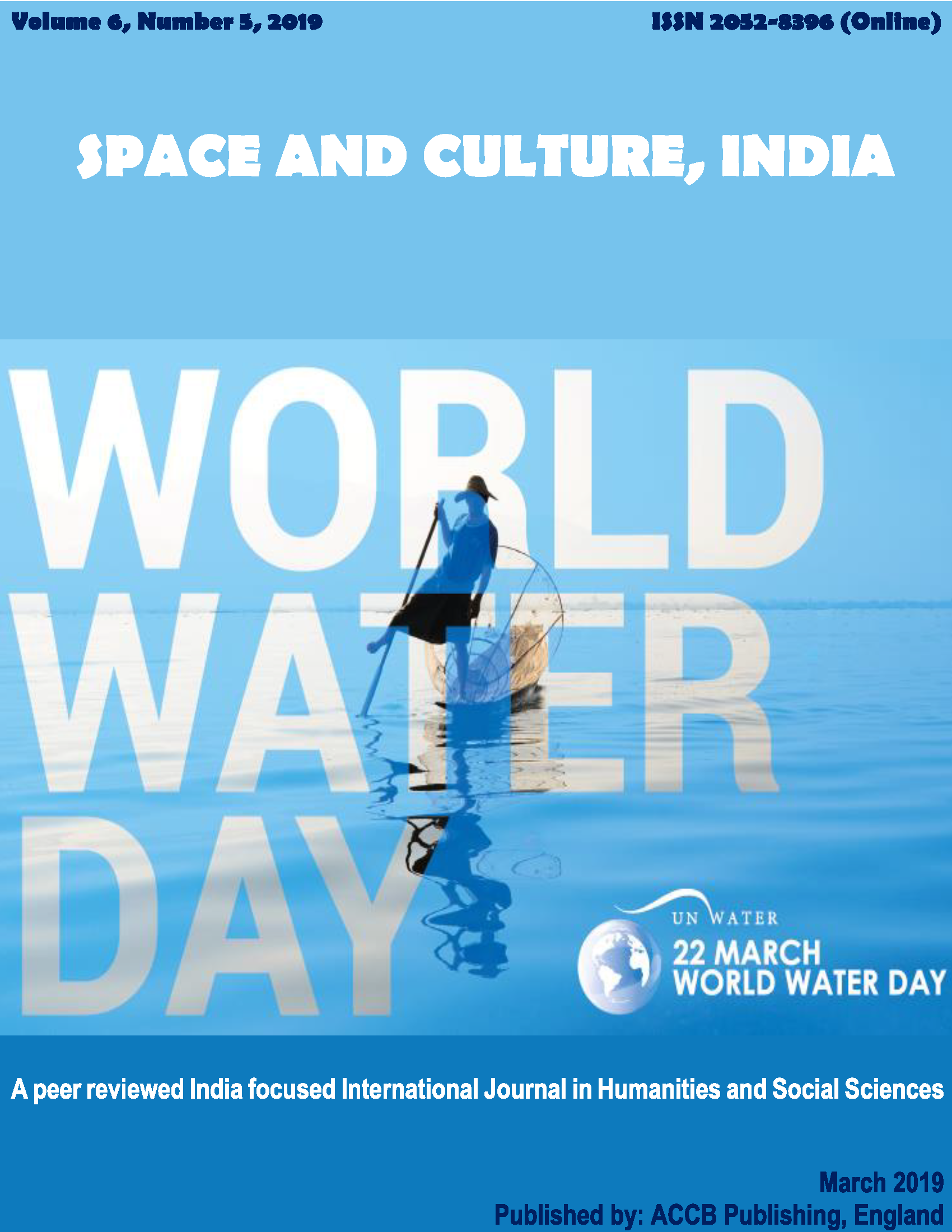Financial Inclusion Remodeling: Including the Excluded Masses

Abstract
Economic development is possible only if a significant share of the population develops a culture of savings. This culture is conceivable through financial inclusion, which widens the resource base of the financial system, thus, bringing in the marginalised and low-income sections within the purview of the formal banking sector. The inclusion of the marginalised section of society helps in shielding the financial wealth and various other resources in exigent situations. The study captures the discernible trends and practices present in an emerging country like India.
Moreover, financial inclusions reduce the scope of exploitation of the weaker sections of the society by providing secure and easy access to formal credit. Hence, in this study, we have considered the case of India for understanding the role of financial inclusion in economic development. The Indian government aims at providing easy access to finance for those who have remained from the reaches of banking and financial systems through the policy of Pradhan Mantri Jan Dhan Yojna. Under this policy, the government-owned public-sector banks have given many incentives to the marginalised sections so that they do not feel burdened by the rules and regulations of the regular banking system. The primary objective of this article is to critically review the policy as a programme with a focus of financial inclusion of the under-served population.
Keywords
Financial policy, Formal Banking, Low-income groups, Economic development, India
Author Biography
Raja RR Singareddy
Raja R.R Singareddy is a fellow student pursuing doctoral degree in Finance at XLRI, Jamshedpur. He completed Bachelor’s degree in Electronics and Communication Engineering. His earlier experience was in controlling finance operations for a non-profit organization. His current research interests are in financial investments, corporate finance, trade flows and consequent performance flows.
Balamurugan Annamalai
Balamurugan Annamalai did his B. Tech (Computer Science) from Indian Institute of Technology, Varanasi and MBA from Indian Institute of Management Calcutta. Currently, he is pursuing doctoral studies in marketing from XLRI Jamshedpur in India. He has industry experience dealing with brand management.
Shabana Chandrasekaran
Shabana Chandrasekaran is an engineering and management graduate from India. Currently, she is pursuing her doctoral studies in information systems from XLRI - Xavier School of Management, Jamshedpur. Her research interests include machine learning and its application on text mining.
References
Ahmed, M.K., Asadullah, M.N. and Kambhampati, U. (2016). The effect of formal banks on household income and poverty in Bangladesh, Malaysian Journal of Economic Studies, 53(2), pp. 173-193.
Bansal, S. (2014). Perspective of technology in achieving financial inclusion in rural India, Procedia Economics and Finance, 11, pp. 472-480.
Baruah, P.B. (2014). Financial Access of Unorganised Manufacturing Enterprises in Assam, Space and Culture, India, 2(2), pp. 4-16, https://doi.org/10.20896/saci.v2i2.84
Burgess, R. and Pande, R. (2005). Do rural banks matter? Evidence from the Indian social banking experiment, American Economic Review, 95(3), pp. 780-795.
Banerjee, A.V., Cole, S. and Duflo, E. (2004). Banking reform in lndia, India Policy Forum, Brookings Institute and NCAER, available at: https://economics.mit.edu/files/508 (accessed 21 December 2018).
Credit Suisse (2017). Global Wealth Report 2017, available at: https://static.poder360.com.br/2017/11/global-wealth-report-2017-en.pdf (accessed 21 December 2018).
Economic Times (2018). Number of adult Indians with bank accounts rises to 80%, available at: https://economictimes.indiatimes.com/industry/banking/finance/banking/number-of-adult-indians-with-bank-accounts-rises-to-80/articleshow/63838930.cms (accessed 21 December 2018).
Edward, P. and Olsen, W. (2006). Paradigms and Reality in Micro-Finance: The Indian Case, Perspectives on Global Development & Technology, 5(1/2), pp. 31-54.
Felsenthal, M. and Hahn, R. (2018). Financial Inclusion on the Rise, But Gaps Remain, Global Findex Database Shows, available at https://www.worldbank.org/en/news/press-release/2018/04/19/financial-inclusion-on-the-rise-but-gaps-remain-global-findex-database-shows (accessed 21 December 2018).
Guirkinger, C. (2008). Understanding the coexistence of formal and informal credit markets in Piura, Peru, World Development, 36(8), pp. 1436-1452.
Gupta, S. (2014). Micro-Finance: A Brief Description. International Journal of Multidisciplinary Approach & Studies, 1(4), pp. 319-327.
Khandker, S.R. (1998). Fighting poverty with microcredit: experience in Bangladesh, Oxford, MA: Oxford University Press.
Kumar, A., Mishra, A.K., Saroj, S. and Joshi, P.K. (2017). Institutional versus non-institutional credit to agricultural households in India: Evidence on impact from a national farmers’ survey, Economic Systems, 41(3), pp. 420-432.
Kumar, A., Singh, R., Jee, S., Chand, S., Tripathi, G. and Saroj, S. (2015). Dynamics of Access to Rural Credit in India: Patterns and Determinants, Agricultural Economics Research Review, 28(conf), pp. 151-166.
Ministry of Finance (2018). 31.20 crore accounts opened under Pradhan Mantri Jan-Dhan Yojana (PMJDY) with aggregate deposit balances Rs. 75,572.09 crore as on 28.2.2018, available at: http://pib.nic.in/newsite/PrintRelease.aspx?relid=177851 (accessed 21 December 2018).
Ministry of Statistics and Programme Implementation (MoSPI) (2012). Situation Assessment Survey of Farmers: NSS 59th Round Sch 33: 2003, available at: http://mail.mospi.gov.in/index.php/catalog/124/download/1426 (accessed 21 December 2018).
NABARD (2013). Status of Microfinance in India 2012-13, Micro Credit Innovation Department (MCID), Mumbai.
Nguyen, H.T.K. and Nguyen, D.T. (2018). Globalisation and bank performance in Vietnam, Malaysian Journal of Economic Studies, 55(1), pp. 49-70.
Ramadugu, N.S. and Pasupuleti, G. (2009). Rural Marketing in India: Retailing through Microfinance Institutions, available at: http://ibscdc.org/Case_Studies/Marketing/Marketing%20Strategies/MM0068.htm (accessed 21 December 2018).
Rangarajan, C., Kaul, I. and Seema, S. (2007). Revisiting employment and growth, ICRA Bulletin-Money & Finance, 3(2), pp. 57-68.
Reserve Bank of India (2014). Financial Intermediation for All – Economic Growth with Equity, available at: https://rbi.org.in/scripts/FS_Speeches.aspx?Id=912&fn=2754 (accessed 6 February 2018).
Singh, M. (2016). Microfinance-A Boon to the Poor: The Role of Nabard, in Vaibhav, Pandey, N. and Pradhan, G.P. (Eds.), Financial Economics and Sustainability Issues in India, New Delhi: Horizon Books, pp. 124-129.
Statista (2018). Number of mobile phone users in India from 2013 to 2019 (in millions), available at: https://www.statista.com/statistics/274658/forecast-of-mobile-phone-users-in-india/ (accessed 21 December 2018).
Thorat, U. (2007). Financial inclusion–the Indian experience, Paper presented at the HMT-DFID Financial Inclusion Conference.
Vyas, C.S. and Raman, A. (2012). Microfinance Institutions in India: An Overview, International Journal of Marketing and Technology, 2(10), pp. 233-248.
World Bank (2015). Annual Report 2015, available at: http://www.worldbank.org/en/about/annual-report-2015 (accessed 21 December 2018).
wood Joanna, L. (2000). Microfinance: Sustainable Banking with the Poor. Washington, DC: World Bank.